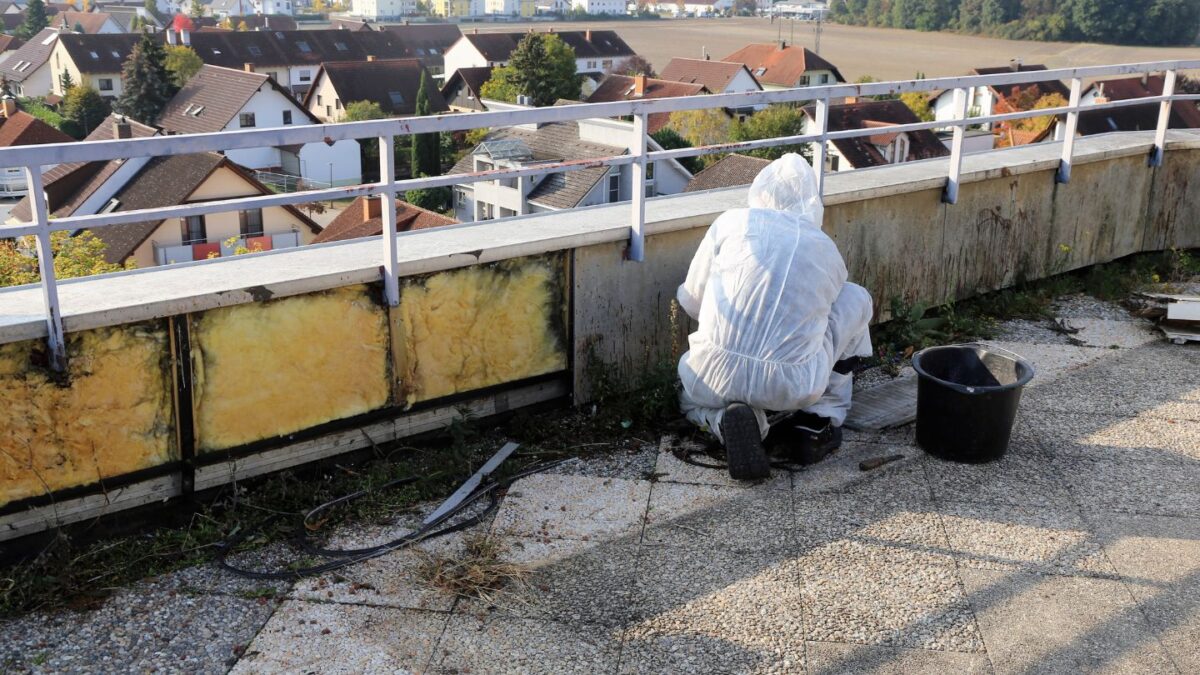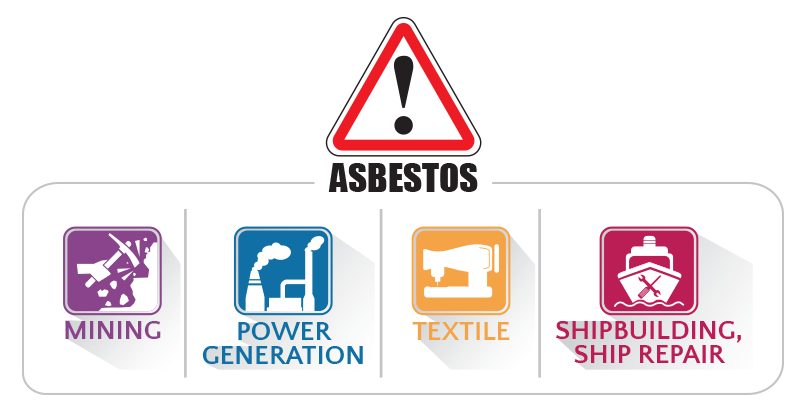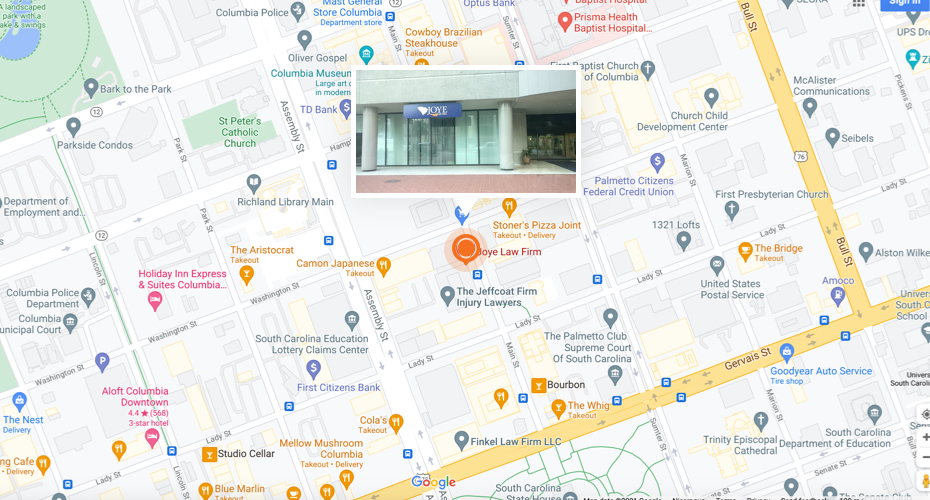
Many of South Carolina’s largest industries pose a risk to workers from asbestos exposure. People who work or worked in mining, power generation, textile, shipbuilding, and ship repair industries are among those most at risk for asbestos-related diseases, which have sickened and killed many workers in South Carolina and across the country.
Asbestos, a natural mineral product, is resistant to heat and corrosion. In the past, it was commonly used in insulation, cement, and flooring, among other applications. Exposure to asbestos fibers has been proven to cause illnesses such as mesothelioma, asbestosis, and asbestos-related lung cancer.
Even though asbestos use has greatly reduced, people continue to die from job-related exposure to the material. In South Carolina, vermiculite ore, which contains asbestos, is part of the mining industry, and workers still face exposure to asbestos at the state’s coastal shipyards.

Statistics On Asbestos-Related Deaths in South Carolina
During a recent 15-year period, more than 600 people died in South Carolina from diseases related to asbestos exposure. This figure means the state experiences more asbestos-related deaths than average.

Of the deaths related to asbestos in South Carolina:
- 469 died from mesothelioma, an asbestos-related cancer that forms in the thin protective tissues that cover the lungs or abdomen. Most people who suffer from mesothelioma have the pleural disease type, which forms in the lining of the lungs. More than 3,000 people are diagnosed with this disease in the United States each year, and most of those can be linked to job-related asbestos exposure.
- 141 died from asbestosis, a chronic lung disease caused by inhalation of asbestos fibers. Exposure to the fibers can scar the tissue of the lungs and cause shortness of breath.
While mesothelioma is often referred to as “asbestos cancer,” several other cancers are also linked to asbestos exposure. Asbestos exposure has been linked directly to lung cancer, and some studies have also linked it to other types of cancer. The World Health Organization says about half of all occupational cancer deaths are linked to asbestos.
Occupations and Environmental Areas at Risk
South Carolina has a long history in the vermiculite industry, and vermiculite contains asbestos. The naturally occurring ore, often referred to as “white” asbestos, is present in the northwest region of the state, where vermiculite processing was once a major industry.
Asbestos deposits have also been found along the eastern slope of the Appalachian Mountains in the Upstate and in the Piedmont. Two areas are located near the North Carolina state line inside of Kings Mountain State Park and three more are to the southwest of this area along Highway 97.
In addition to naturally occurring vermiculite, many South Carolina corporations received shipments of the mineral from outside the state.
South Carolina industries with a high risk of asbestos exposure include:
 Textiles
Textiles
A lung cancer study demonstrated the dangers for South Carolina asbestos textile workers. The study showed 18 percent of workers developed lung cancer – a rate three times of the study’s control group – and 31 percent developed pleural plaques, fibrous thickening on the lining of the lung, compared to 3 percent of the control group.
 Maritime industries and shipbuilding
Maritime industries and shipbuilding
In the 1930s, asbestos insulation was used in the construction of seagoing vessels. Workers inhaled these fibers in the enclosed environment below decks, where they could become highly concentrated. A study by the National Cancer Institute showed that shipyard workers suffer from “a small but significant excess mortality from all causes, lung cancer, and mesothelioma, most of which is probably related to asbestos exposure.”
 Energy industries
Energy industries
According to the Center for Health Statistics, power plant workers suffer from an exceptional rate of diseases related to asbestos, with 3 percent of all work-related deaths in the industry caused by mesothelioma and asbestos cancer. Once commonly used electric insulator, crocidolite, a deadly form of amphibole asbestos, was used in many power plants, putting workers at risk. Plus many of the gaskets and other equipment such as pipe fittings and machine insulations used in power plants also contained asbestos. Some workers had to cut or trim the materials as part of their jobs, further exposing them to asbestos dust.
Job Sites With Known Asbestos Exposure
A number of South Carolina sites have been linked to asbestos exposure. These include:
- Raybestos-Manhattan. In North Charleston, the company had an asbestos textile plant, and employees were exposed to asbestos during spinning and weaving processes.
- Charleston Naval Shipyard. Older ships commonly contained asbestos insulation exposing shipyard workers like the ones in this Navy facility to asbestos.
- Savannah River Site Processing Plants. These include Carolina Vermiculite Division, VA Vermiculite; Patterson Vermiculite Company; Palmetto Vermiculite Company/Enoree Minerals; and Zonolite Company/W.R. Grace. This site in Aiken is now an active industrial complex managed by the Department of Energy dedicated to nuclear materials and environmental management. However, it used to be a series of processing plants that exposed workers to asbestos.
Other job sites include textile mills, power facilities, and manufacturing facilities.
Restrictions On Asbestos Claims
South Carolina passed the Asbestos and Silica Claims Procedure Act of 2006, which placed restrictions on legal claims for those sickened by asbestos, establishing rules for medical documentation of the claimant’s disease.
The law requires claimants to provide a report from a doctor board-certified in pulmonary medicine, occupational medicine, internal medicine, oncology, or pathology that concludes the patient has been diagnosed with mesothelioma or another asbestos-related cancer, and that asbestos exposure caused the diagnosis.
For those sickened by a non-cancerous asbestos-related disease, claimants must meet a number of requirements, including showing proof that it has been 15 years since the date of the first exposure to asbestos and the date of diagnosis.
The law also establishes rules for those who have been exposed to asbestos and are not sick yet. If these people become sick in the future and can link the physical impairment to asbestos, they may then file a legal claim to seek compensation
If you or a loved one has been sickened by exposure to asbestos, it’s important to seek help from an experienced asbestos disease lawyer as soon as possible to learn about all of your legal options.
Sources:
- Mayo Clinic – Mesothelioma
- Mayo Clinic – Asbestosis







































